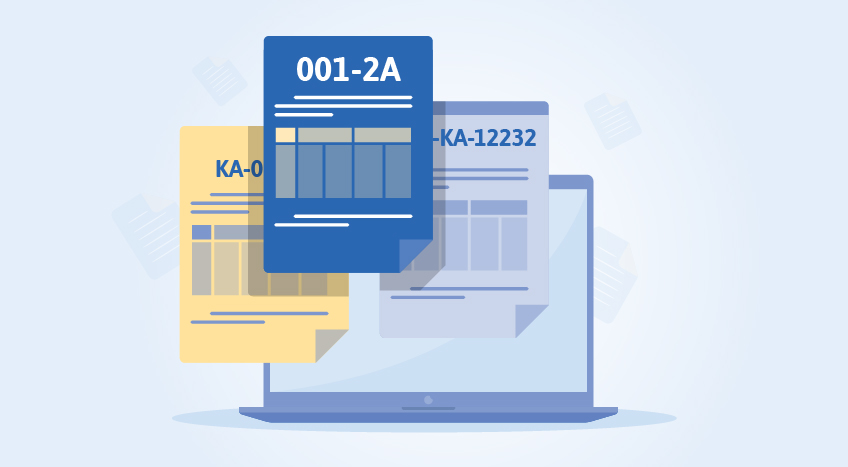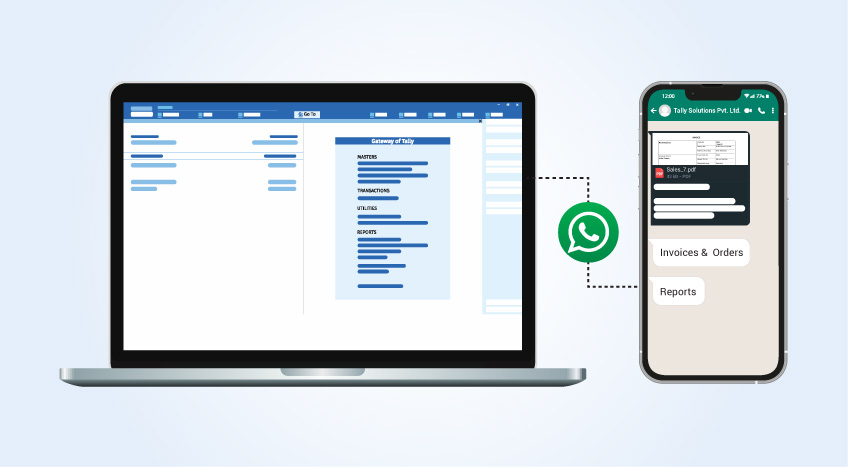SHARE
Tally Solutions | Updated on: December 14, 2022
- How do you classify accounts in financial statements?
- Which accounting standard is applicable for reporting on financial statements?
- How is accounting used to report financial information?
Financial accounting is the process of recording the financial transactions of a company. An accountant also analyzes the financial records and generates financial statements. Reports and statements help management visualize and monitor the performance of the company. The most important statements for the owners, shareholders, and investors are the year-end financial statements that summarize all the financial data. Generating these statements is very easy when the accounts are appropriately classified. The right classification ensures that the account is placed in the correct category in the main summary financial statements. Some people use the traditional approach of classifying accounts, but the modern approach is more popular worldwide.
|
Why is it important to choose software for your business development? |
How do you classify accounts in financial statements?
Modern approach
The modern approach is the most popular one. According to this approach the accounts are classified under the categories; asset accounts, liability accounts, capital or owner’s equity accounts, withdrawal accounts, revenue/income accounts and expense accounts. The definition of these categories is:
Asset accounts: Anything that has value and is under the ownership of the company is an asset. Assets can be tangible or intangible. Some examples for tangible assets are land, buildings, equipment, machinery, vehicles, receivables, cash, advance outward payments, inventory etc. A company’s customer base, goodwill, patents, trademarks, copyrights etc. are examples of intangible assets. Each of the tangible and intangible assets should have a separate ledger account that reflects any change in their value.
Liability accounts: The payable amounts that the company owes to others and other liabilities are classified as liability accounts. Some examples of liability are bills payable, accounts payable, interest payable, payroll payable, loan payable, rent payable etc. If the company has received a revenue payment in advance, it is classified as a revenue until the product or service paid for has been delivered.
Capital or owner’s equity accounts: The difference between the total assets and the total liabilities is the owner’s equity or capital. Injecting new funds into the business, making profits or losses are activities that change the value of the capital accounts. There are as many capital accounts created as there are owners or partners in the company. If the company has multiple owners of stock or shares, the value is accounted for under a single capital stock account that reflects the changing values.
Withdrawal accounts: In financial accounting the owner and the business are separate entities. So when the owner takes cash from the company it is accounted for as a drawings account. In the case of larger companies, the cash paid out to stock is accounted for in the dividend account.
Revenue or income accounts: The incoming cash from sales of goods or services is accounted under the income or revenue accounts. When you subtract all the expenses from the income you arrive at the profit of the company. A negative difference indicates a loss. Sometimes there is a difference between a revenue and an income account. Revenue is generally the inflow of money generated by the commercial activities of the company. So, these accounts are maintained separately.
Expense accounts: Any expense of the company is recorded as an expense. This includes, rent expense, electricity expense, supplies expense, telephone expense, internet expense, depreciation, miscellaneous expense etc.
Traditional approach
The traditional approach classifies accounts into four main types; personal accounts, real accounts, nominal accounts, and valuation accounts.
Personal accounts: Every individual or organization is given its own personal account. This account holds the information of the money due from or to them.
Real accounts: Assets or properties each have a real account. Each asset has a separate account that details changes in its value. The asset can be tangible or intangible. Some of the accounts that are classified as real accounts are inventory account, cash account, goodwill account, copyright account etc.
Nominal accounts: All the accounts that are related to income, expenses, gains and losses are called nominal accounts. They contain all the data that is required to generate a profit and loss account or an income statement for the company. Some examples are sales account, purchases account, salaries account, rent account, gain/loss on sale of fixed assets account, etc.
Valuation account: A valuation account is also called a contra account. It records the carrying values of an asset or liability in the balance sheet. For example depreciation is a value that is calculated for every period and its valuation account shows the accumulated depreciation account. Every fixed assets will have its own accumulated depreciation account showing its accumulated depreciation amount. When generating the balance sheet, this balance is deducted from the original cost of the asset and entered as the book value or carrying value. Doubtful accounts are also accounted as valuation accounts.
Which accounting standard is applicable for reporting on financial statements?
It is essential that a company follow one of the accepted financial accounting standards so that it complies with accounting principles. This is especially useful to be compliant with local regulations and so that financial accounting information can be easily understood by all. Adherence to financial accounting standards prevents malpractices and financial misrepresentation. Accounting standards also make it easy to clearly define and account for different transactions.
The International Financial Reporting Standards or IFRS is a widely accepted set of financial accounting rules issued by the International Accounting Standards Board (IASB) that helps make the accounting records of companies around the world consistent and easily comparable. The US follows a different set of standards called the Generally Accepted Accounting Principles (GAAP). The consistency in handling transactions in a similar way ensures that all the companies following the standard classify and record their transactions similarly. So, it is easier for lenders, buyers, sellers and all stakeholders to understand each other's financial documents and statements.
How is accounting used to report financial information?
The financial information of a company is recorded for every transaction that the company is involved in. The huge number of accounting transactions are summaries into financial accounting reports which convey accounting and financial information in an easy to understand form. Each accounting report or statement is generated for a specific purpose. They can be daily reports, weekly reports or for larger periods of time. The detailed report are useful for the owners and the managers of a process to monitor performance and progress.
A company can generate specific reports for sales, revenue, profits etc. The most significant reports of a company are the balance sheet, income statement and the cash flow statement. These reports are of interest to the owners, investors, lenders and other stakeholders in a company. They are usually audited before being published at the end of every accounting year.
Accounting software generates reports at different levels quickly and in real time. TallyPrime can go a step further and help the accountant or manager analyze the financial data and visualize the information in graphs and other representations. Realtime, accurate and easy to interpret financial accounting information helps in data driven business management and decision making.
Read More:
Latest Blogs

5 Must Have Reports Insights in Your Dashboard

Import Data from Excel to TallyPrime

All-New Simplified & Powerful Report Filters in TallyPrime

TallyPrime’s Flexible Voucher Numbering Capabilities for Accurate Recordkeeping





